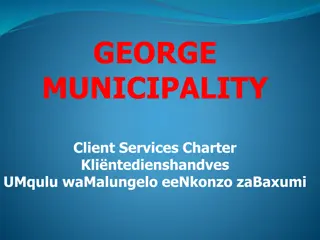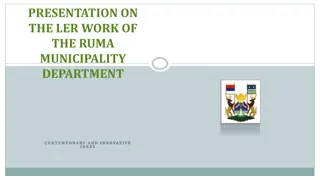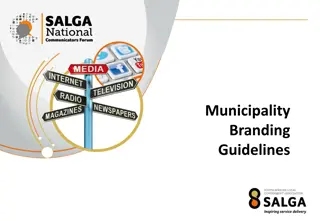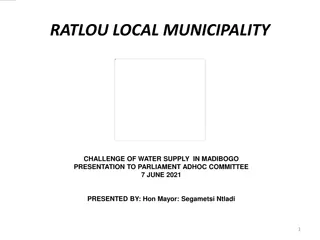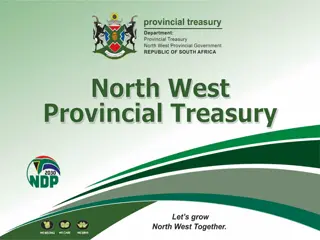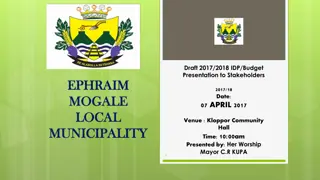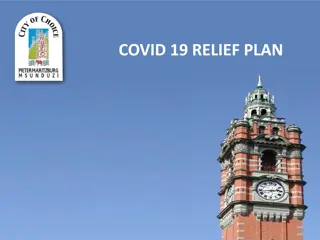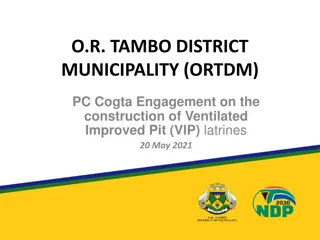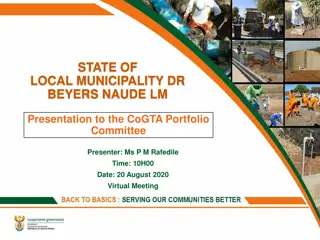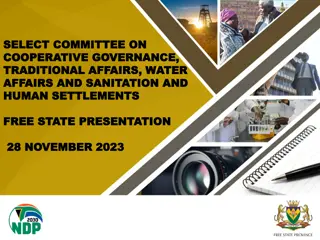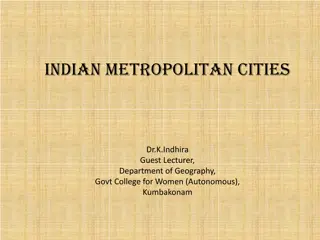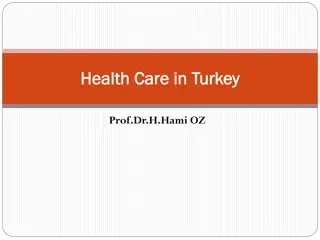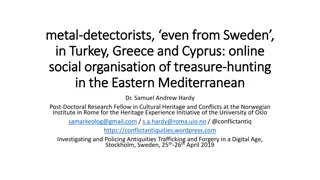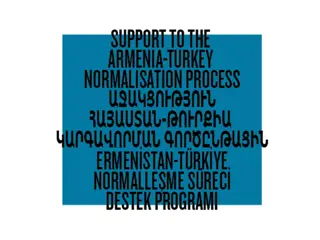Metropolitan Municipality System in Turkey: Trends and Changes
Metropolitanization trends in Turkey have been increasing since the 1950s, leading to the establishment of 30 metropolitan municipalities by 2012. The Law Numbered 6360 brought significant changes, including the formation and composition of metropolitan municipality councils. Despite variations among provinces and cities, a uniform two-tiered system was implemented, emphasizing the role of metropolitan municipalities in providing services to both urban and rural areas.
Download Presentation

Please find below an Image/Link to download the presentation.
The content on the website is provided AS IS for your information and personal use only. It may not be sold, licensed, or shared on other websites without obtaining consent from the author. Download presentation by click this link. If you encounter any issues during the download, it is possible that the publisher has removed the file from their server.
E N D
Presentation Transcript
Metropolitan Municipality System in Turkey & Strengthening Councils Prof. Dr. H seyin G L Political Science and Public Administration Department S leyman Demirel University, Isparta, Turkey Marmara Urban Forum 2021 (MARUF21) October 1-3, 2021, stanbul 1
Contents Urbanization dynamics and tendencies in Turkey The New Local Administration and Metropolitan Municipality System in Turkey after the Law Numbered 6360 Formation and Composition of Metropolitan Municipality Council Suggestions to Strengthen the Metropolitan Municipality Council 2
Metropolitanization Trends in Turkey Turkey has been urbanizing since the 1950s. Since the 1970s the speed of metropolitanization has increased, and cities have started to annex rural areas. Since the 1980s, squatter housing areas and leaped- sprawl have spread. In 1984, the first 3 metropolitan municipalities were established in stanbul, Ankara and zmir, reaching 16 in 2000 and 30 in 2012. Today metropolitan areas have decentralized and some become connected to nearby cities forming urban regions in areas such stanbul-Kocaeli, Bursa-Yalova, zmir- Manisa or Mersin-Adana. 3
Type and Number of Municipalities Since 2012, there have been two types of municipalities in Turkey: (1) city and town municipalities, and (2) two tiered metropolitan municipalities. Today, there are 51 municipalities established in the central cities of 51 provinces and 400 district and 397 town municipalities. There are also 30 metropolitan municipalities and 519 metropolitan district municipalities in these 30 metropolitan municipalities as the 2. tier in metropolitan municipal system. 4
Changes with the Law Numbered 6360 The number of metropolitan municipalities was increased to 30 including all the provinces with a population of 750 thousand or over without considering all the other differences among these 30 provinces and metropolitan cities. The limits of the metropolitan municipalities has been enlarged to meet the limits of respected provinces. The exiting town municipalities, village administrations and special provincial administrations were abolished in 30 provinces with metropolitan municipalities. 5
One Size Fits All Approach Despite many differences among the 30 provinces and metropolitan cities, a one-type two tiered province- wide territorial system of metropolitan municipality was established with the law no. 6360 in 2012. Metropolitan municipality is responsible to provide services not only to metropolitan area but also to rural areas, towns and districts in the same province. Metropolitan district municipalities do not have too many responsibilities left to them. More than 80 % of municipal services in metropolitan provinces are provided by the metropolitan municipality including cemetery, fire and pest/mosquito control services, among others. 6 6
One Size Fits All Approach Metropolitan municipal council is not directly elected by the public but are formed by the representatives coming from the respected metropolitan district municipal councils (1/5 of each district council) and by mayor of each district municipality. Due to increased number of representatives in metropolitan municipal council, these councils are crowded, decreasing their decision making efficiency. 7 7
One Size Fits All Approach Since town municipalities, village administrations and special provincial administrations were abolished in 30 provinces with metropolitan municipalities, a centralized structure of metropolitan municipality system was created, and local democratic participation and representation channels and local autonomy have been limited. All neighborhoods and districts in metropolitan municipalities without regard to their size (either 500 or 1 million) are subject to the same regulations. 8 8
Findings of the Focus Group Interviews (FGIs) The findings of the FGIs conducted with 53 participants (such as council members, mayors, representatives of NGOs and academia) as part of the LAR III project indicate that the representative capacity of the metropolitan municipal council is declined due to increased number of small metropolitan districts represented in the metropolitan municipal council. The current representation system produces results in metropolitan municipal councils that overly favor small populated districts, and that disadvantage largely populated (mainly central) districts. For example, in some metropolitan cities, members from mostly rural peripheral districts form the majority of the metropolitan municipal council. 9 9
Findings of the Focus Group Interviews (FGIs) Some of the focus group participants stated that the some members of the metropolitan municipality council were sensitive to the issues that concern their districts, and that they did not show much interest in other issues related to the whole metropolitan area or province. Some interviewees asserted that if the metropolitan municipality had a directly elected council by popular vote, as in other municipalities, it would be easier to maintain a mayor-council balance, and easier for the party of the mayor to obtain a majority in the metropolitan municipality council. It was also stated that the agenda of the metropolitan municipality councils was very busy, and the length of council and commission meetings were inadequate to discuss and make decisions. 10 10
Findings of the Focus Group Interviews (FGIs) It was agreed upon by the FG participants that women, youth, disabled people, rural neighborhoods and other disadvantaged groups are not adequately and fairly represented in metropolitan municipality councils and commissions. Some focus group participants argued for lower or no election threshold, for primary elections by political parties to determine especially mayoral candidates and for the use of preferential lists or ballots in the local elections. Some participants stated a need for municipal council members who have relevant expertise for council and commission duties. 11 11
Policy Implications / Suggestions Findings of LAR III Project, literature review and general observations indicate a need; For some directly and province-wide elected members in the metropolitan municipal council. For reconsidering the size, decision-making and control functions and representativeness of the metropolitan municipal council. For increasing the representation of women, youth, disabled people, rural neighborhoods and other disadvantaged groups in the councils. For establishing more effective and improved mechanisms for relations and interaction of especially rural neighborhoods and mukhtars with municipalities. 12
Policy Implications / Suggestions For reforming the electoral system in a way to achieve the principle of justice in representation and stability in administration more effectively with legal regulations on such issues as preferential lists or ballots, lower election threshold, increased transparency of the election processes, and quota candidates for the party that won the mayor's office. For increasing public and NGO participation and accountability in the making, execution and audit processes of local decisions, land use and strategic plans via strengthening municipal council and its members, involvement of public and mukhtars in council meetings and effective working of citizen s assemblies. For strengthening metropolitan district municipalities and devolving more power to them. 13
Thanks for listening gulhuseyin@yahoo.com 14
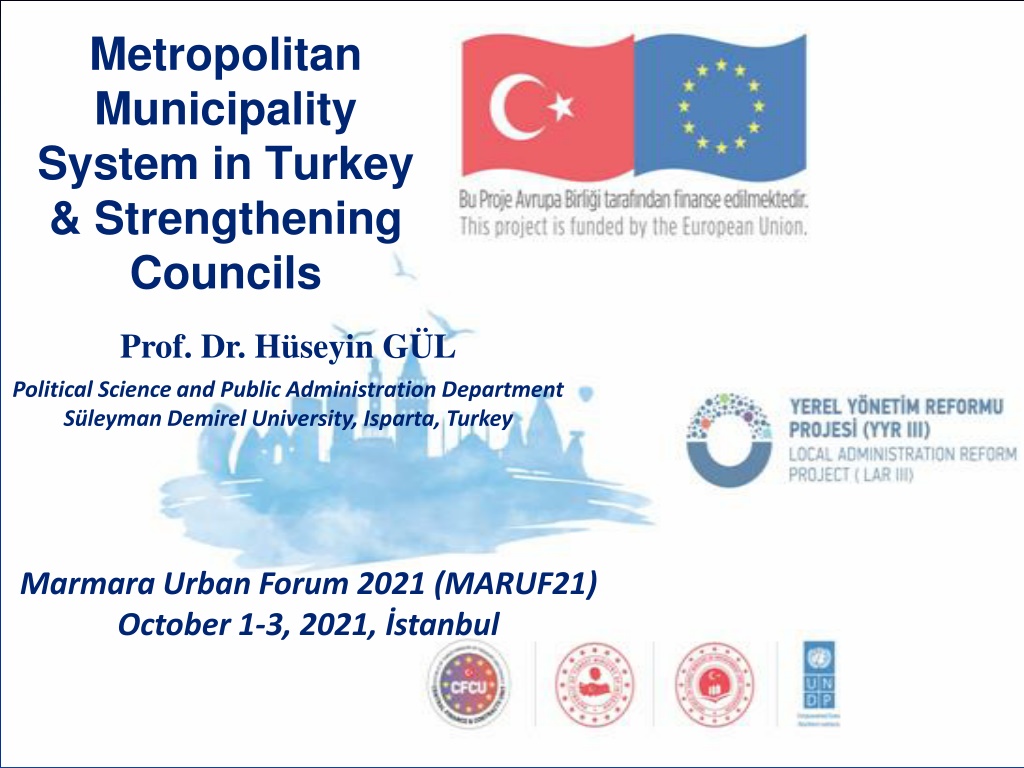

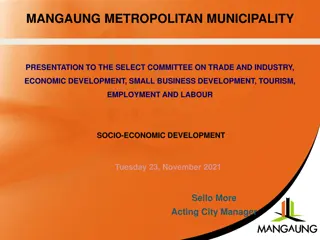

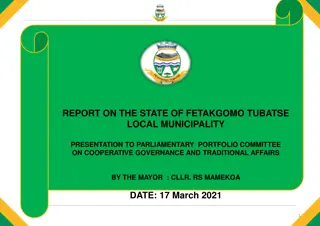
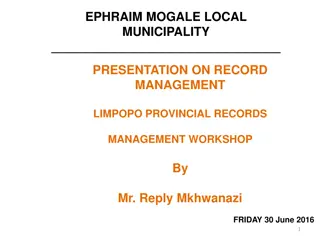
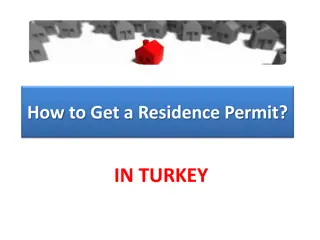


![Solarize [Municipality] Campaign - Empowering [Municipality] with Solar Energy](/thumb/250437/solarize-municipality-campaign-empowering-municipality-with-solar-energy.jpg)
